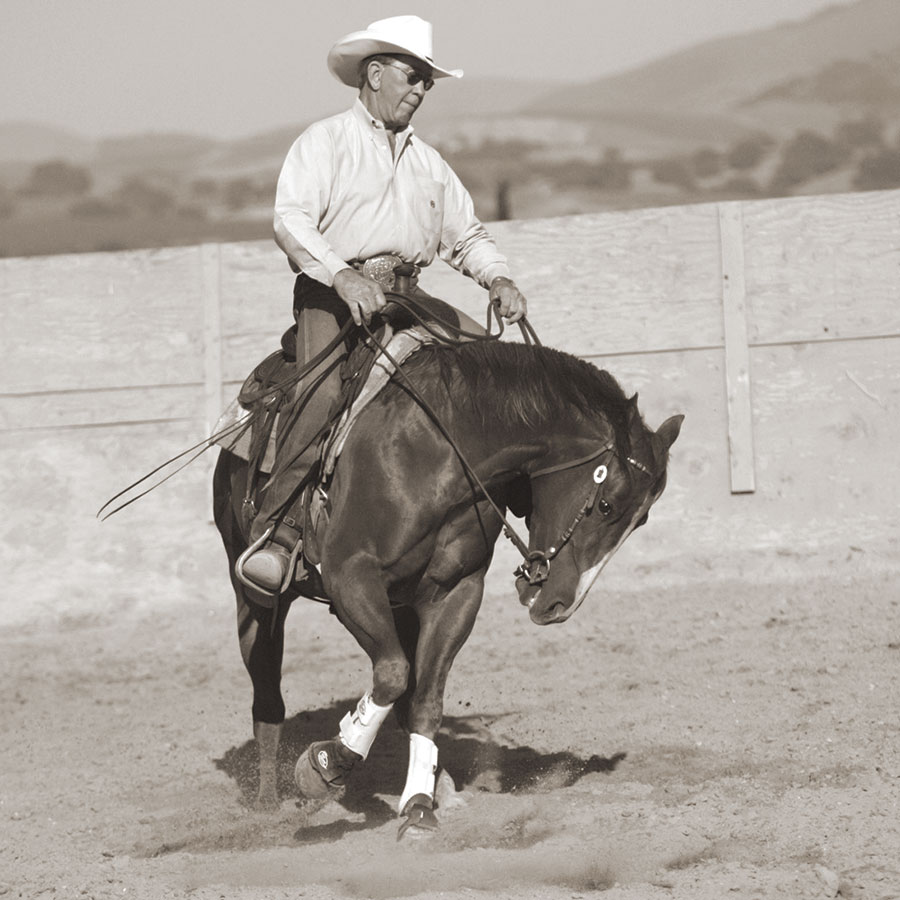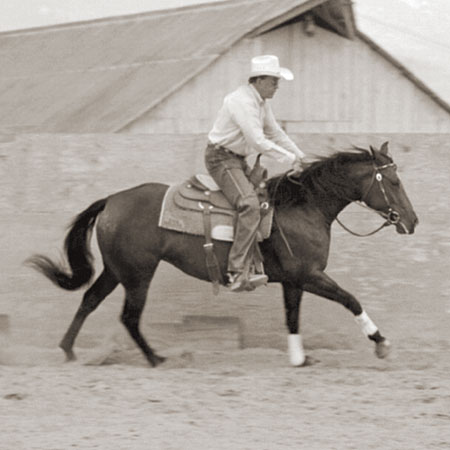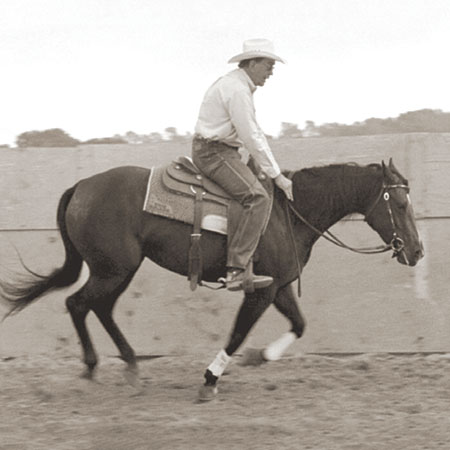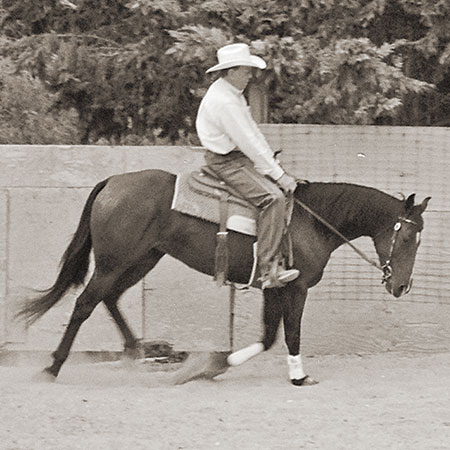Foundation Training for the Performance Horse with Les Vogt

What is speed control? It’s when we are moving at any gait and have the capacity to reduce or increase speed at will, with little or no effort on the part of the rider. There are a lot of ways to cue a horse to change speeds, but what we will work with here is the concept of riding with the motion. There are three actual ways to ride a horse’s motion: most people ride with the motion; a racehorse jockey leans forward and rides a half stride ahead of the horse to encourage speed; and lot of our real good riders ride a half stride behind the motion—where their weight and position are actually creating some resistance for the horse’s movement. It would be like if you tied a sack of rocks on one horse and had no rocks on another horse; the horse with the rocks tied on him is going to stop way before the horse without the rocks. Why? Because the rocks go against his motion so he slows down after a period of time.

So we want to ride a little bit behind. How do we ride behind? First, take the weight off your stirrups. The more you push on your feet, the more forward motion you are going to get. So if you ever feel a hot spot while you are riding your horse, then lift your feet a little and sit back on your pockets. This will put your weight further back on the horse and help you slow him down.
Let’s talk about fast circles. If at any point, when you are developing fast circles, you feel that your horse is becoming chargey, or like he’s doing the driving, then you have pushed him too far. You have to slow down and ride your horse at a lesser speed until you can control him easily. How do you decide what level is good as far as speed goes? The neck. When that neck starts to become petrified, or in other words, stiff, you are over the speed limit Any time that you have any trouble in your circles, it’s going to start in the neck. Sure, you are going to have shoulder problems, or a horse that leans in sometimes, but that can be fixed if you have control of the neck.

There is no reason for a horse to hate speed, no reason to get cranky, fall out of frame and change leads behind unless there is something bothering him. What you want to do at this stage of the program is to just push your horse up a little bit now and again, let him hold that speed for a while and then let him drop back down to a more comfortable lope. To get him to speed up, I’ll get up over his neck a little and move my hands up his neck at the same time and cluck. If I have to bump him with my legs, I’ll do that too. I won’t, however, let him get out of frame so his spine doesn’t match the circumference of the circle anymore. I’d rather get just a little extra speed perfectly than a mess of speed, if you get my drift.
Keep him moving out for a little while and then, when you are ready to slow down, just drop your weight back down in the saddle and back behind his motion again. Especially if your horse is a little tired, you’ll be surprised at how he’ll respond to that cue to slow down without you having to do much else. Some may even want to just stop, and you know what? That’s really okay with me. I know I can always keep him going if I want to, but to have him feel like he wants to come back to me when I just sit down in the saddle, that’s a little harder to come by, so don’t discourage it too much and confuse your horse.

If your horse just doesn’t want to respond to these soft cues, here’s a plan to get him there. The best place to do this is on a big galloping track (not a racetrack but a big, wide open space with good footing), if you have access to one. First, when you ask softly for the speed change, fast to slow, and you get nothing, take him around five or 10 more laps with slight rein contact (just enough to keep him flexed), until he really starts to wish you’d let him stop. Then let him do a collected stop, coming down to the trot, then the walk and finally to the back-up. And you’ll only let him do this if he’s perfect in the neck. If he starts to resist at all, push him back up to the gallop and send him around a few more times until you think he’s ready to try again. You should start to see results from this approach in about five days, but keep at it for a good two weeks before you quit it entirely. By then you’ll have really made an impression on him that when you give him a chance to slow down—he’d better take it!
Of course, when you do this you need to use good judgment. Don’t totally exhaust your horse trying to do it in one day. Just commit to the two weeks, and you’ll get the improvement you’re after.
So slowly but surely add a little more speed to your circles every week, but only do it if you can keep the horse’s neck soft and his body relaxed. He needs to learn to move out without any tension in his body.
–Les
Leave a Comment
All fields must be filled in to leave a message.